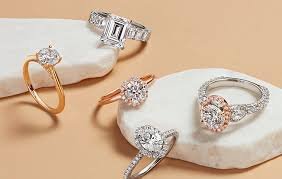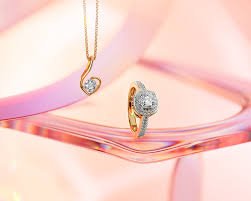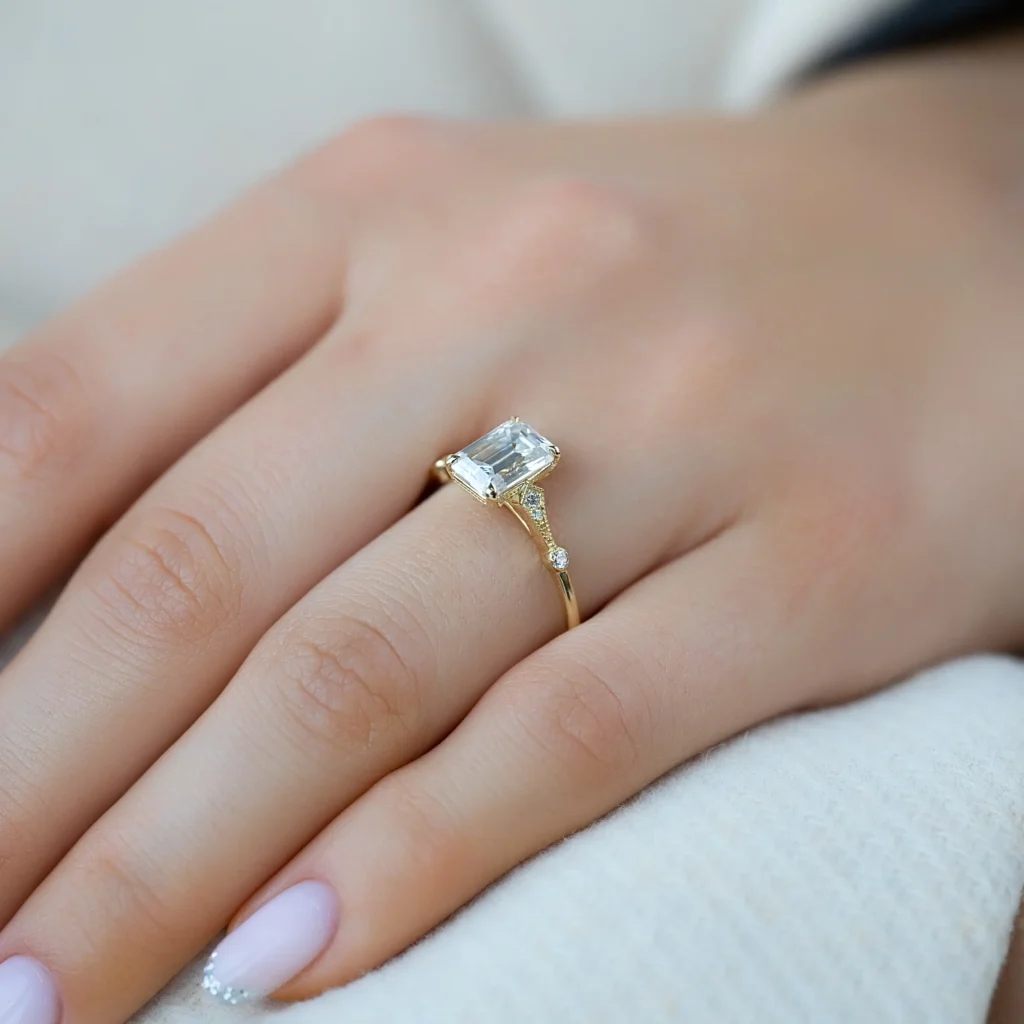Engagement rings have long been one of the most significant symbols of love, commitment, and a promise of forever. From ancient traditions to contemporary designs, the journey of engagement rings reflects the evolution of societal values, craftsmanship, and fashion trends. This guide by Look What Mom Found explores the fascinating history of engagement rings, their timeless appeal, and how modern trends have transformed them into personalized statements of individuality.
A Glimpse into the Origins
The concept of an engagement ring dates back thousands of years. The ancient Egyptians are credited as the first to exchange rings as a symbol of eternal love. Their circular shape represented infinity, while the space in the middle symbolized a gateway to the future. Rings were often made from reeds, hemp, or leather, demonstrating their simplicity yet profound meaning.
The tradition of wearing the ring on the fourth finger of the left hand also originated in ancient times. The Romans believed in the “vena amoris” or “vein of love,” which they thought connected the fourth finger directly to the heart. Although modern anatomy has debunked this notion, the romantic symbolism endures.
Medieval and Renaissance Elegance
During the Middle Ages, engagement rings began to hold greater significance. It was in 1477 when Archduke Maximilian of Austria gifted Mary of Burgundy a diamond ring that the trend of diamond engagement rings started to take root. This historic moment marked the beginning of diamonds’ association with eternal love and commitment.
These rings were often elaborate, featuring gemstones arranged in symbolic patterns. Rubies symbolized passion, sapphires represented loyalty, and emeralds signified hope. During the Renaissance period, “posy rings” gained popularity. These gold bands were engraved with romantic verses, making them deeply personal and meaningful.
The Victorian Era: Romance and Flourish
The Victorian era (1837-1901) brought a significant shift in engagement ring design. Queen Victoria’s love for her husband, Prince Albert, and her fondness for intricate jewelry influenced the era’s aesthetic. Rings from this period often combined diamonds with other gemstones and featured whimsical designs such as flowers, hearts, and serpents (a symbol of eternity).
The discovery of diamond mines in South Africa in the late 19th century made diamonds more accessible, further solidifying their place in engagement rings. The designs became increasingly ornate, reflecting the romantic ideals of the era.
The Edwardian Era: Grace and Sophistication
The Edwardian era (1901-1910) was marked by elegance and refinement. Platinum became the metal of choice due to its strength and ability to hold intricate designs. Engagement rings from this period often featured lacy, filigree patterns adorned with diamonds and other precious stones.
Pearls also became a popular choice, symbolizing purity and innocence. Rings during this time exuded a delicate, feminine charm, influenced by the opulent lifestyles of the Edwardian elite.
The Art Deco Period: Bold and Glamorous
The 1920s and 1930s ushered in the Art Deco era, a time of bold geometric designs and vibrant colors. Engagement rings from this period were a stark departure from the delicate styles of the Edwardian era. They featured sharp angles, symmetrical patterns, and a mix of colorful gemstones such as rubies, sapphires, and emeralds.
Platinum and white gold remained popular metals, complementing the modern aesthetic. The Art Deco period reflected the spirit of the Jazz Age—a celebration of freedom, innovation, and individuality.
The Mid-Century Boom: Diamonds Take Center Stage
The mid-20th century saw a dramatic shift in engagement ring trends, largely influenced by De Beers’ iconic “A Diamond is Forever” campaign in 1947. This slogan revolutionized the diamond industry, positioning diamonds as the ultimate symbol of everlasting love.
Solitaire diamond rings became the quintessential choice for engagements, emphasizing simplicity and elegance. Yellow gold bands were particularly popular, and round brilliant-cut diamonds became the standard. This era also saw the rise of Hollywood glamour, with celebrities influencing ring styles and setting trends.

The 1970s and 1980s: Personalization Takes Root
As societal norms evolved in the 1970s and 1980s, engagement ring designs began to reflect individual personalities and tastes. Couples started opting for unique shapes, such as marquise and pear-cut diamonds. Two-tone bands combining yellow and white gold also gained popularity.
This period saw a rise in the use of alternative gemstones for engagement rings, such as amethyst, aquamarine, and garnet. These choices allowed couples to express their unique style while still embracing tradition.
The 1990s and Early 2000s: Minimalism and Celebrity Influence
The 1990s ushered in a minimalist approach to engagement rings. Princess-cut diamonds became a favorite, offering a modern alternative to the traditional round cut. Platinum made a comeback, favored for its sleek, contemporary look.
Celebrities played a significant role in shaping trends during this time. For example, Princess Diana’s iconic sapphire and diamond engagement ring inspired countless couples to consider colored gemstones. This period also saw the rise of halo settings, where smaller diamonds surround a central stone, creating a dazzling effect.
Modern Trends: Innovation Meets Tradition
Today, engagement rings are more diverse than ever, reflecting a blend of classic designs and modern trends. Couples have the freedom to choose rings that resonate with their values, style, and story. Let’s explore some of the key modern trends:
1. Lab-Grown Diamonds
The rise of ethical and sustainable practices has led to the growing popularity of lab-grown diamonds. These diamonds are chemically identical to natural ones but are created in controlled environments, reducing environmental impact and ethical concerns.
2. Unique Gemstones
While diamonds remain a popular choice, many couples are opting for alternative gemstones such as morganite, sapphire, or moissanite. These stones offer a unique and personal touch, often at a more affordable price point.
3. Vintage and Antique Rings
Vintage-inspired designs and genuine antique rings are making a comeback. These rings often feature intricate details, filigree work, and unique cuts that evoke a sense of nostalgia and timeless elegance.
4. Customization and Personalization
Modern couples value individuality, leading to a surge in custom-designed engagement rings. From engraving meaningful dates or phrases to choosing unconventional shapes and settings, personalization is key.
5. Mixed Metals and Two-Tone Designs
Mixed metal designs, such as combining rose gold with platinum, are gaining traction. These rings offer a contemporary twist while maintaining a timeless appeal.
6. Minimalist and Stackable Rings
Simplicity is in vogue, with minimalist designs featuring clean lines and understated elegance. Stackable engagement rings and wedding bands allow for versatility and creativity, enabling couples to build a unique set over time.
7. Ethical Sourcing
Consumers are increasingly conscious of the origins of their jewelry. Rings made with conflict-free diamonds and responsibly sourced materials are highly sought after, reflecting a growing awareness of environmental and social issues.

Conclusion: A Journey Through Time
The evolution of engagement rings mirrors the changes in society, culture, and personal values over the centuries. From the simple bands of ancient Egypt to the dazzling and diverse designs of today, these symbols of love have continually adapted to reflect the spirit of the times.
Whether you’re drawn to the classic solitaire, a bold Art Deco design, or a modern minimalist ring, the beauty of an engagement ring lies in its ability to tell a story—a story of love, commitment, and the promise of a shared future. So, the next time you admire a sparkling engagement ring, take a moment to appreciate the rich history and craftsmanship that have shaped this enduring tradition.






